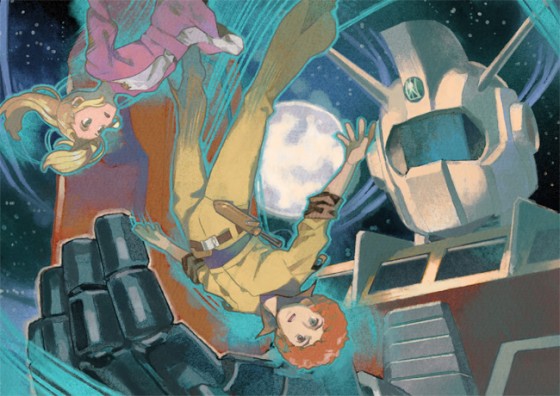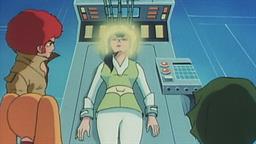
Shinji breaks the fourth wall “to rewrite the world into one that doesn’t have Evas.” This time, Shinji makes a point to help the other characters on their journey. Once again, it suggests that the happiest ending is the one without child soldiers piloting mechanical monsters. The ending of Thrice Upon a Time resembles the earlier two endings in some ways.
#Space runaway ideon remake series#
Anno summarized the series by suggesting that “ the tsunami wipes out the world and the story then focuses on how the survivors rebuild it.” The original announcement for the show in February 1995 bears little resemblance to the finished product, but it does state that it would be a story about how “ man attempts to artificially induce his own evolution.” Neon Genesis Evangelion has always been about growth and change. The franchise takes place in Tokyo-III, a city that has been rebuilt twice. As the show progressed, Anno pushed it in overtly psychological and reflective directions.įor all the darkness in Neon Genesis Evangelion, it was always about rebuilding.

Series creator Hideaki Anno was a fan of the genre and has even been described as “ the definitive otaku artist.” The show was a loving homage to classic anime, from Mobile Suit Gundam to Space Runaway Ideon. The series was a clear riff on the mecha anime: stories about characters (usually children) driving gigantic robots to fight monsters. The original Neon Genesis Evangelion ran a single two- cour season, but that was more than enough to assure its place in pop culture history. However, even in an era dominated by belated sequels and franchise extensions, it is interesting to wonder why the continuation of the beloved Japanese anime series would look like the Rebuild: a series of four movies released over 14 years, which starts out as a straight up remake of the animated series but evolves into something radically different. So there would always be a market for more media related to the Neon Genesis Evangelion franchise.

David Samuels compared the property’s impact on Japanese culture to that of “ the Beatles and the first Star Wars movies” on western audiences. This is to say nothing of the cultural impact of Neon Genesis Evangelion.

As of 2012, branded pachinko and pachislot machines were worth roughly ¥700 billion while the merchandising rights were estimated at an additional ¥150 billion. Neon Genesis Evangelion is a hugely successful property. Of course, the commercial answer is obvious. Confronted with Rebuild of Evangelion, it is tempting to ask a single question: why?


 0 kommentar(er)
0 kommentar(er)
